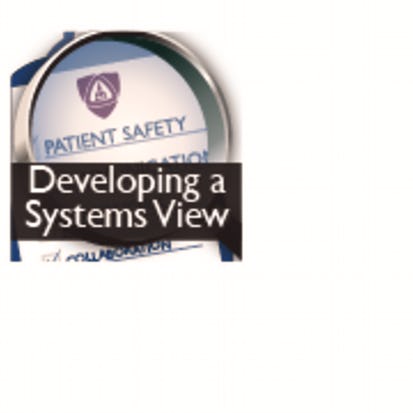- Level Professional
- المدة 6 ساعات hours
- الطبع بواسطة Johns Hopkins University
-
Offered by

عن
In this course, you will be able develop a systems view for patient safety and quality improvement in healthcare. By then end of this course, you will be able to: 1) Describe a minimum of four key events in the history of patient safety and quality improvement, 2) define the key characteristics of high reliability organizations, and 3) explain the benefits of having strategies for both proactive and reactive systems thinking.الوحدات
History of Patient Safety and Quality Improvement
1
Assignment
- Lesson 1 Quiz
7
Videos
- The Scope of the Problem
- History of Quality Improvement and Patient Safety: 1854 - 1966
- History of Quality Improvement and Patient Safety: 1966 - Present
- Mitigable or Preventable Harm: Crimean War, 1854-1856
- "To Err is Human": Building a Safer Health System
- "Crossing the Quality Chasm": A New Health System for the 21st Century
- "Free From Harm": Accelerating Patient Safety Improvement Fifteen Years After "To Err is Human"
5
Readings
- Institute of Medicine Report: To Err is Human
- Institute of Medicine Report: Crossing the Quality Chasm: A New Health System for the 21st Century
- National Patient Safety Foundation Report: Free From Harm: Accelerating Patient Safety Improvement Fifteen Years After To Err is Human
- Error in Medicine
- An Intervention to Decrease Catheter-Related Bloodstream Infections in the ICU
Definitions in Patient Safety and Quality Improvement: An Overview
1
Assignment
- Lesson 2 Quiz
11
Videos
- Definitions and Intersection of Quality and Safety
- Harm
- Sentinel Event
- Error
- Hazard
- Risk
- Root Cause Analysis (RCA)
- Failure Mode and Effects Analysis (FMEA)
- Quality
- Safety
- Culture
High Reliability Organizing and Why It Matters
1
Assignment
- Lesson 3 Quiz
7
Videos
- Overview of High Reliability
- A Model for Understanding High Reliability
- Analyzing Healthcare as a High Reliability Organization
- High Reliability Organization Sociocultural Norms
- Five Principles for High Reliability and Mindful Organizing
- High Reliability Organization Behaviors and Habits
- Patient Safety Tools of Mindful Organizing
Applying a Systems Lens to Healthcare
1
Assignment
- Lesson 4 Quiz
9
Videos
- Definition of a System
- Definition of Systems Thinking
- Reductionistic Thinking vs. Holistic Thinking
- Swiss Cheese Model
- First Order and Second Order Problem Solving
- Whose Problem Is It?
- Oncology Infusion Clinic: Case Study
- Proactive and Reactive Systems Thinking Strategies
- Conclusions
Auto Summary
Enhance your understanding of patient safety and quality improvement in healthcare with this professional course from Coursera. Focused on developing a systems view, you'll explore key historical events, high reliability organization characteristics, and proactive and reactive strategies. Ideal for professionals in Science & Engineering, the course spans 360 hours with flexible subscription options: Starter, Professional, and Paid. Join now to elevate your expertise in healthcare systems thinking.
Melinda Sawyer


